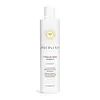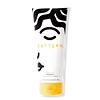What's inside
What's inside
 Key Ingredients
Key Ingredients

 Benefits
Benefits

 Concerns
Concerns

 Ingredients Side-by-side
Ingredients Side-by-side

Water
Skin ConditioningCocamidopropyl Hydroxysultaine
CleansingSodium Methyl Cocoyl Taurate
CleansingGlycerin
HumectantCaprylyl/Capryl Glucoside
CleansingSodium Cocoyl Isethionate
CleansingGlyceryl Stearate Se
EmulsifyingSodium Chloride
MaskingSodium Lauroyl Methyl Isethionate
CleansingTrisodium Ethylenediamine Disuccinate
Guar Hydroxypropyltrimonium Chloride
Skin ConditioningPlumeria Acutifolia Flower Extract
Skin ConditioningCananga Odorata Flower Oil
MaskingLavandula Angustifolia Oil
MaskingCitrus Aurantium Dulcis Peel Oil
MaskingSalvia Sclarea Oil
MaskingVanillin
MaskingPogostemon Cablin Leaf Oil
MaskingGlycine Soja Oil
EmollientSodium Benzoate
MaskingPyrus Malus Fruit Extract
Skin ConditioningPotassium Sorbate
PreservativeSimmondsia Chinensis Seed Oil
EmollientOryza Sativa Extract
AbsorbentCitric Acid
BufferingHydrolyzed Quinoa
Skin ConditioningHydrolyzed Rice Protein
Skin ConditioningCalophyllum Inophyllum Seed Oil
AntimicrobialButyrospermum Parkii Butter
Skin ConditioningPersea Gratissima Oil
Skin ConditioningTaraxacum Officinale Leaf Extract
Skin ConditioningSalvia Officinalis Leaf Extract
CleansingMelissa Officinalis Leaf Extract
Skin ConditioningLinalool
PerfumingLimonene
PerfumingWater, Cocamidopropyl Hydroxysultaine, Sodium Methyl Cocoyl Taurate, Glycerin, Caprylyl/Capryl Glucoside, Sodium Cocoyl Isethionate, Glyceryl Stearate Se, Sodium Chloride, Sodium Lauroyl Methyl Isethionate, Trisodium Ethylenediamine Disuccinate, Guar Hydroxypropyltrimonium Chloride, Plumeria Acutifolia Flower Extract, Cananga Odorata Flower Oil, Lavandula Angustifolia Oil, Citrus Aurantium Dulcis Peel Oil, Salvia Sclarea Oil, Vanillin, Pogostemon Cablin Leaf Oil, Glycine Soja Oil, Sodium Benzoate, Pyrus Malus Fruit Extract, Potassium Sorbate, Simmondsia Chinensis Seed Oil, Oryza Sativa Extract, Citric Acid, Hydrolyzed Quinoa, Hydrolyzed Rice Protein, Calophyllum Inophyllum Seed Oil, Butyrospermum Parkii Butter, Persea Gratissima Oil, Taraxacum Officinale Leaf Extract, Salvia Officinalis Leaf Extract, Melissa Officinalis Leaf Extract, Linalool, Limonene
Water
Skin ConditioningSodium C14-16 Olefin Sulfonate
CleansingCocamidopropyl Betaine
CleansingPropanediol
SolventGlycol Distearate
EmollientArgania Spinosa Kernel Oil
EmollientCocos Nucifera Oil
MaskingMel
EmollientMelaleuca Alternifolia Leaf Oil
AntioxidantOlea Europaea Fruit Oil
MaskingBiotin
AntiseborrhoeicPersea Gratissima Oil
Skin ConditioningRicinus Communis Seed Oil
MaskingSimmondsia Chinensis Seed Oil
EmollientButyrospermum Parkii Butter
Skin ConditioningAloe Barbadensis Leaf Juice
Skin ConditioningPrunus Amygdalus Dulcis Oil
Skin ConditioningGlycine Soja Oil
EmollientGlycine Soja Sterols
EmollientGlycolipids
Skin ConditioningGlycerin
HumectantPhospholipids
Skin ConditioningAmodimethicone
Guar Hydroxypropyltrimonium Chloride
Skin ConditioningHydroxyethylcellulose
Emulsion StabilisingLauryl Lactyl Lactate
Skin ConditioningHydroxyacetophenone
AntioxidantPEG-150 Distearate
EmulsifyingParfum
MaskingHydrolyzed Vegetable Protein Pg-Propyl Silanetriol
Skin ConditioningCellulose
AbsorbentPhenoxyethanol
PreservativeCitric Acid
BufferingPEG-150 Stearate
Disodium EDTA
PEG-1m
Emulsion StabilisingStearic Acid
CleansingSodium Hydroxide
BufferingSodium Acetate
BufferingPotassium Sorbate
PreservativeSodium Benzoate
MaskingLinalool
PerfumingWater, Sodium C14-16 Olefin Sulfonate, Cocamidopropyl Betaine, Propanediol, Glycol Distearate, Argania Spinosa Kernel Oil, Cocos Nucifera Oil, Mel, Melaleuca Alternifolia Leaf Oil, Olea Europaea Fruit Oil, Biotin, Persea Gratissima Oil, Ricinus Communis Seed Oil, Simmondsia Chinensis Seed Oil, Butyrospermum Parkii Butter, Aloe Barbadensis Leaf Juice, Prunus Amygdalus Dulcis Oil, Glycine Soja Oil, Glycine Soja Sterols, Glycolipids, Glycerin, Phospholipids, Amodimethicone, Guar Hydroxypropyltrimonium Chloride, Hydroxyethylcellulose, Lauryl Lactyl Lactate, Hydroxyacetophenone, PEG-150 Distearate, Parfum, Hydrolyzed Vegetable Protein Pg-Propyl Silanetriol, Cellulose, Phenoxyethanol, Citric Acid, PEG-150 Stearate, Disodium EDTA, PEG-1m, Stearic Acid, Sodium Hydroxide, Sodium Acetate, Potassium Sorbate, Sodium Benzoate, Linalool
Ingredients Explained
These ingredients are found in both products.
Ingredients higher up in an ingredient list are typically present in a larger amount.
This ingredient is also known as shea butter. It is an effective skin hydrator and emollient.
Emollients help soothe and soften your skin. It does this by creating a protective film on your skin. This barrier helps trap moisture and keeps your skin hydrated. Emollients may be effective at treating dry or itchy skin.
Shea butter is rich in antioxidants. Antioxidants help fight free-radicals, or molecules that may harm the body. It is also full of fatty acids including stearic acid and linoleic acid. These acids help replenish the skin and keep skin moisturized.
While Shea Butter has an SPF rating of about 3-4, it is not a sunscreen replacement.
Shea butter may not be fungal acne safe. We recommend speaking with a professional if you have any concerns.
Learn more about Butyrospermum Parkii ButterCitric Acid is an alpha hydroxy acid (AHA) naturally found in citrus fruits like oranges, lemons, and limes.
Like other AHAs, citric acid can exfoliate skin by breaking down the bonds that hold dead skin cells together. This helps reveal smoother and brighter skin underneath.
However, this exfoliating effect only happens at high concentrations (20%) which can be hard to find in cosmetic products.
Due to this, citric acid is usually included in small amounts as a pH adjuster. This helps keep products slightly more acidic and compatible with skin's natural pH.
In skincare formulas, citric acid can:
While it can provide some skin benefits, research shows lactic acid and glycolic acid are generally more effective and less irritating exfoliants.
Most citric acid used in skincare today is made by fermenting sugars (usually from molasses). This synthetic version is identical to the natural citrus form but easier to stabilize and use in formulations.
Read more about some other popular AHA's here:
Learn more about Citric AcidGlycerin is already naturally found in your skin. It helps moisturize and protect your skin.
A study from 2016 found glycerin to be more effective as a humectant than AHAs and hyaluronic acid.
As a humectant, it helps the skin stay hydrated by pulling moisture to your skin. The low molecular weight of glycerin allows it to pull moisture into the deeper layers of your skin.
Hydrated skin improves your skin barrier; Your skin barrier helps protect against irritants and bacteria.
Glycerin has also been found to have antimicrobial and antiviral properties. Due to these properties, glycerin is often used in wound and burn treatments.
In cosmetics, glycerin is usually derived from plants such as soybean or palm. However, it can also be sourced from animals, such as tallow or animal fat.
This ingredient is organic, colorless, odorless, and non-toxic.
Glycerin is the name for this ingredient in American English. British English uses Glycerol/Glycerine.
Learn more about GlycerinGlycine Soja Oil comes from the soybean. Glycine Soja is native to eastern Asia.
Soybean oil is an emollient. It is rich in antioxidants and fatty acids including palmitic, stearic, oleic, and linoleic acids.
As an emollient, the fatty acids in soybean oil helps keep your skin soft and hydrated. It does so by creating a film on top that traps moisture in.
Soybean oil is also rich in vitamin E, a potent antioxidant. Vitamin E is also anti-inflammatory and provides a soothing effect.
Studies show soy may help fade hyperpigmentation from UVB. It does so by disrupting the melanin process from UVB induced skin inflammation.
This ingredient may not be malassezia folliculitis, or fungal-acne, safe.
Soybeans are rich in proteins and are part of the legume family. Foods made with soybeans include tofu, soymilk, edamame, miso, and soy sauce.
Learn more about Glycine Soja OilThis ingredient is derived from guar gum.
It is a conditioning ingredient, meaning it helps soften skin and hair.
Linalool is a fragrance and helps add scent to products. It's derived from common plants such as cinnamon, mint, citrus, and lavender.
Like Limonene, this ingredient oxidizes when exposed to air. Oxidized linalool can cause allergies and skin sensitivity.
This ingredient has a scent that is floral, spicy tropical, and citrus-like.
Learn more about LinaloolPersea Gratissima Oil is also known as avocado oil.
Avocado Oil has antioxidant properties. It is mostly made up of the glycerides of fatty acids. About 67% of these fatty acids is made up of oleic acid. Palmitic acid and linoleic acid are also present.
These fatty acids help hydrate and soften the skin. It may increase collagen content in the skin. Collagen helps keep your skin plump and firm. This ingredient helps reduce inflammation and has not shown to clog pores.
This ingredient may not be fungal-acne safe due to its high fatty acid content.
Avocados also have B vitamins, vitamin K, vitamin C, vitamin E, and potassium.
Learn more about Persea Gratissima OilPotassium Sorbate is a preservative used to prevent yeast and mold in products. It is commonly found in both cosmetic and food products.
This ingredient comes from potassium salt derived from sorbic acid. Sorbic acid is a natural antibiotic and effective against fungus.
Both potassium sorbate and sorbic acid can be found in baked goods, cheeses, dried meats, dried fruit, ice cream, pickles, wine, yogurt, and more.
You'll often find this ingredient used with other preservatives.
Learn more about Potassium SorbateThis oil comes from the seeds of the desert shrub called Jojoba. It is more commonly known as jojoba oil, a non-comedogenic oil.
Jojoba oil does not contain fragrance and has many fatty-acids, making it a great soothing ingredient.
It also contains Vitamin E, a great moisturizing ingredient. Vitamin E is also an antioxidant and protects your skin against oxidative damage.
This ingredient humectant properties, meaning it helps draw moisture from the air. This helps keep your skin hydrated.
While jojoba has antibacterial properties, it is only able to kill some strains of bacteria.
Studies also show it helps in wound healing. In fact, Indigenous cultures have used jojoba as a moisturizer and to help treat burns for centuries.
Fun fact: Jojoba oil similar to natural human skin sebum, so it has a great effect on dry skin. It is also promising with helping to regulate sebum production.
Due to its fatty acid content, Jojoba oil may not be fungal acne safe. We recommend speaking with a professional if you have any concerns.
Learn more about Simmondsia Chinensis Seed OilSodium Benzoate is a preservative. It's used in both cosmetic and food products to inhibit the growth of mold and bacteria. It is typically produced synthetically.
Both the US FDA and EU Health Committee have approved the use of sodium benzoate. In the US, levels of 0.1% (of the total product) are allowed.
Sodium benzoate works as a preservative by inhibiting the growth of bacteria inside of cells. It prevents the cell from fermenting a type of sugar using an enzyme called phosphofructokinase.
It is the salt of benzoic acid. Foods containing sodium benzoate include soda, salad dressings, condiments, fruit juices, wines, and snack foods.
Studies for using ascorbic acid and sodium benzoate in cosmetics are lacking, especially in skincare routines with multiple steps.
We always recommend speaking with a professional, such as a dermatologist, if you have any concerns.
Learn more about Sodium BenzoateWater. It's the most common cosmetic ingredient of all. You'll usually see it at the top of ingredient lists, meaning that it makes up the largest part of the product.
So why is it so popular? Water most often acts as a solvent - this means that it helps dissolve other ingredients into the formulation.
You'll also recognize water as that liquid we all need to stay alive. If you see this, drink a glass of water. Stay hydrated!
Learn more about Water